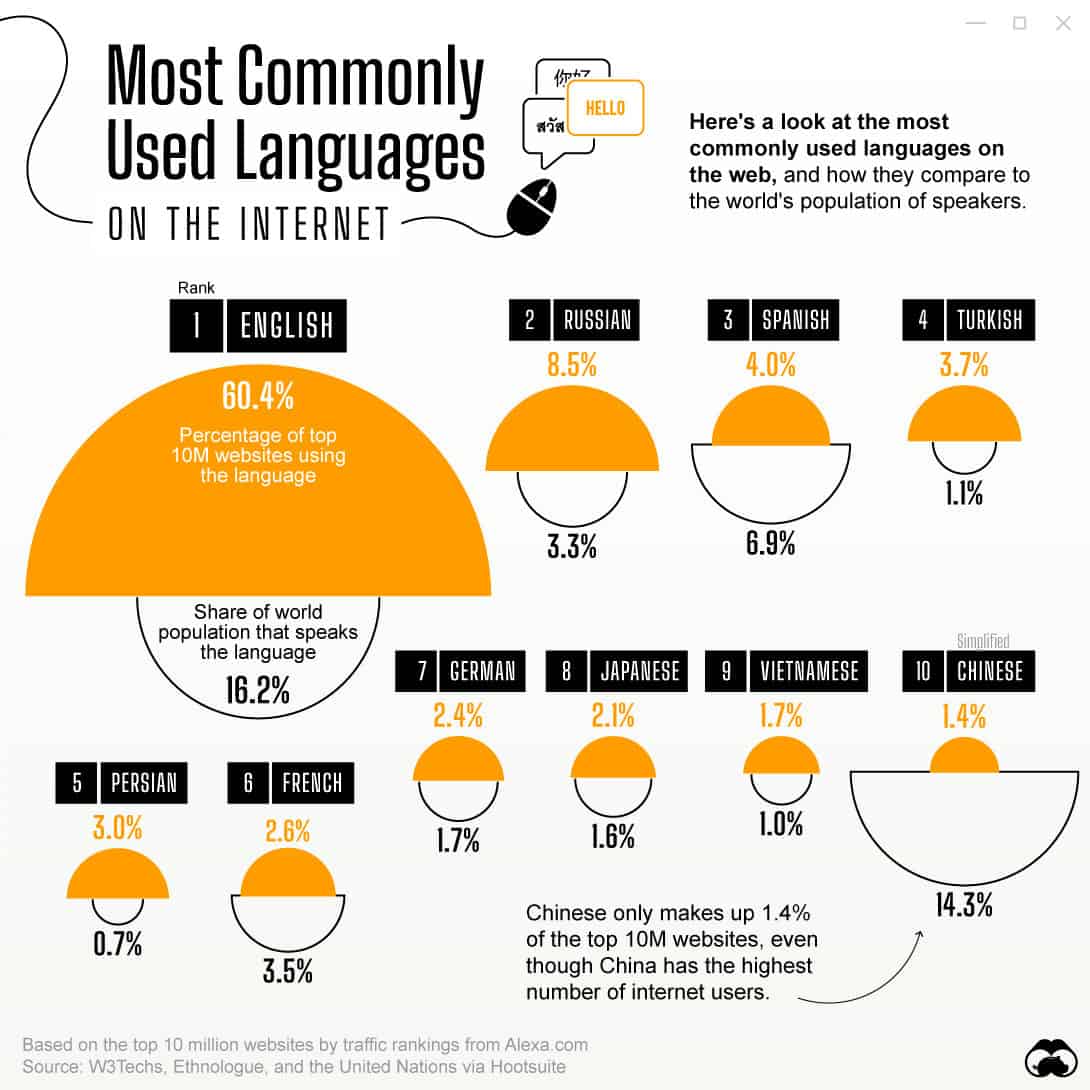If you’ve been keeping up with any of our recent blogs, you’ll know that invest in Multilingual Customer Experience (MCX) is rapidly becoming the top priority for brands.
Operating in international markets, however, means adding another dimension to your customer experience (CX) strategy.
You’ve taken the leap and gone global; now, your customers are experiencing their journey with you from different geographical locations and with an array of native languages. It makes sense, then, to start investing in that all-important multilingual aspect.
MCX: Multilingual Customer Experience is the Key to International Success
The CSA’s 2020 edition of ‘Can’t Read, Won’t Buy’ highlighted the need for better access to information in languages other than English; their research showing that even where companies are offering multilingual options, localization is often not good enough. Nearly half of survey respondents said that they would leave a website when they encounter a translation problem – with 45% of those problems being bad quality content, lack of localized help and incomplete translation.
CSA’s 2020 edition of ‘Can’t Read, Won’t Buy’
Whilst English remains the world’s most widely spoken language, brands that rely solely on its power in the global market are missing a trick. For one, it’s a well-known fact that consumers prefer to purchase in their own language (and currency, for that matter). Sure, a proportion might go on to buy something they really need but – as the above statistics show – many won’t.
And, in today’s digital age, it’s easier than ever to switch brands. Around 50% of consumers will defect after just one bad experience, and many will do so without even complaining. Never underestimate how much value consumers place on excellent CX.
Localizing well also enables you to build relationships with consumers. This, in turn, can lead to increased loyalty and trust. Not only can it increase the likelihood of retaining your existing customers; it can also help you to convert new ones.
Offering the right language options can also open you up to new markets, where consumers may already be interested in your products or services but unable to access information in their native language. It’s likely that they’ll even be willing to pay more if the process is more straightforward than that of your competitors.
It’s an open and shut case: investing in multilingual customer experience is an absolute must in 2021.
Finding Your Target Points
Creating an outstanding multilingual customer experience strategy involves much more than just translating your website. Rather, you need to consider every stage of the customer journey.
Yes, it’s absolutely worth investing in localized marketing campaigns to attract foreign customers. But did you know that around 75% of customers would be more likely to repurchase if you provide after-sales care in their native language? And, since it costs 6-7x more to attract a new customer than to retain an existing one, it’s hugely important to pay attention to CX beyond the point of purchase.
English remains the world’s most widely spoken language – Visual Capitalist
Customers expect multilingual support and there’s no reason you can’t provide it. We understand that this costs money; we aren’t suggesting you go and translate every piece of content you have into as many languages as you can think of.
Instead, take a look at your analytics and find out where most of your website traffic is already coming from, as well as considering the target markets you’d like to break into and those with the greatest ROI potential. Remember, it’s important to be specific due to regional variations – ie. should you be localizing for Spanish or Latin American audiences?
As always, do your market research and consider cultural and generational preferences such as communication channels, tone of voice and payment methods.
How to Evolve Your Multilingual Customer Experience
The types of multilingual customer service you offer will depend on several factors, including your target audience, budget and the type of product or service you are providing. Try to pinpoint whereabouts multilingual support would be most beneficial to your customers.
Tech-savvy millennials and Gen-Zers, for example, like to be able to find the information they need quickly and self-sufficiently, so you might consider translating your FAQ’s or self-service portal. The same goes for social media, if you are targeting younger audiences – subtitling videos could be a great way to enhance user experience and expand your current reach.
On the other hand, implementing over the phone interpretation (OPI) or even hiring multilingual agents could be the best option for business if most of your enquiries are received via this channel.
In many instances, ChatBots can be a useful way to fix minor issues. Not only do they enable you to offer 24/7 support, but they also reduce the workload for your teams and speed up resolution times for users.
While customers still want human empathy when it comes to trickier problems and complaints, advancements in AI and NLP make it possible to construct a conversation-like experience, even injecting some of your brand’s personality into the mix. If ChatBots work for your business model, consider making them multilingual.
This can be done either by customer selection or automatic detection and is a fantastic way to provide in-language support whilst keeping costs down.
While it’s worth investing what you can in this area, it’s still entirely possible to create a top-quality experience for your customers and remain cost-efficient in the process. We advise getting clued up on how to translate your website on a budget and optimise your translation workflow before embarking on your journey.
Tools and Solutions
For a seamless multilingual customer experience, you need to empower your agents with the best possible tools. Our Zendesk plugin allows your customer service team to translate both incoming and outgoing tickets in an ultra-fast and silky-smooth fashion – even giving you the option to choose between machine or human translation, depending on the individual circumstances. Agents can feel more confident about tackling problems effectively in any supported language, thus engaging clients and showing them how much you care.
As well as this, our partners at Kumul can help you to leverage the voice of your customer (VoC) in real-time. The value of VoC cannot be over-emphasised, as it enables you to improve your CX in ways that really matter to the customer.
A powerful multilingual engagement tool, Kumul collects actionable insights that can also help you to implement more sustainable and transparent strategies throughout your supply chains. Check out our recent blog on VoC and increased accountability to find out more.
Finally, we currently have another exciting tool in the works. We can’t let the cat out of the bag just yet, but we can tell you that it will reshape the way you communicate with your global users, and vice versa, by facilitating instant, direct, multilingual conversations.
In Conclusion
We truly believe that investing in Multilingual Customer Experience (MCX), through effective multilingual service and support, is the best way to support your customers on a global scale. It’s also the perfect opportunity to differentiate yourself from competitors – not enough brands are actually doing this well.
When you’re ready to start working on your MCX model, reach out to us! We will work with you to find the best solutions, break down language barriers and, most importantly, increase overall customer satisfaction.





